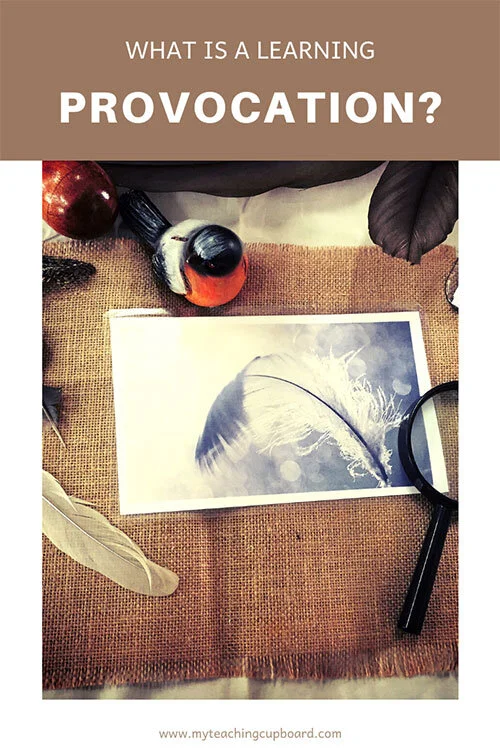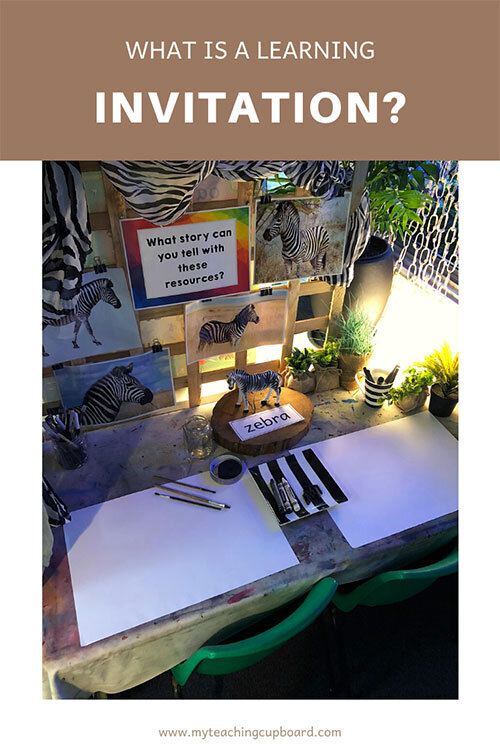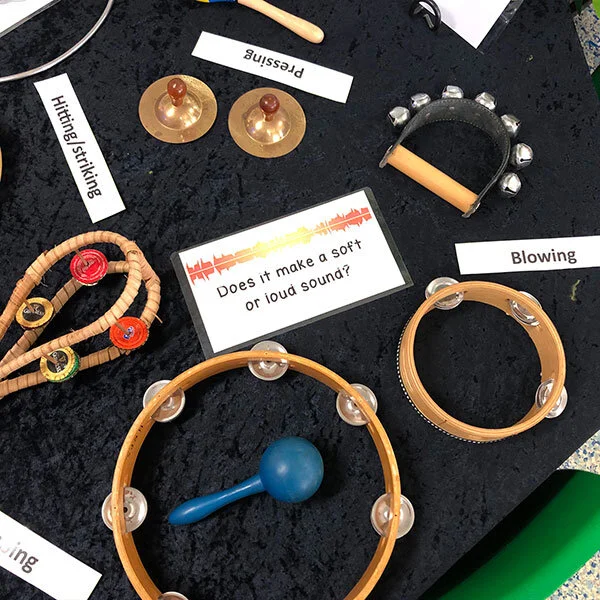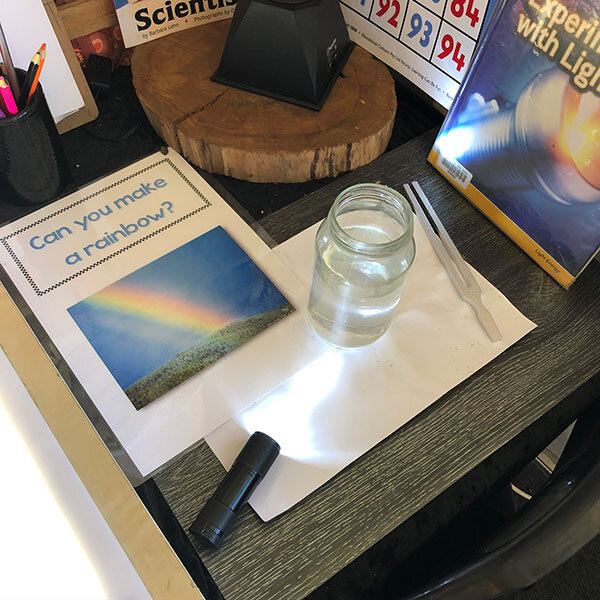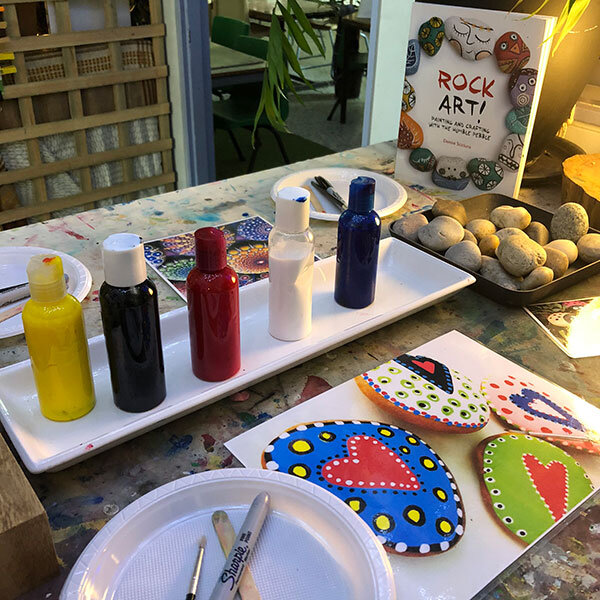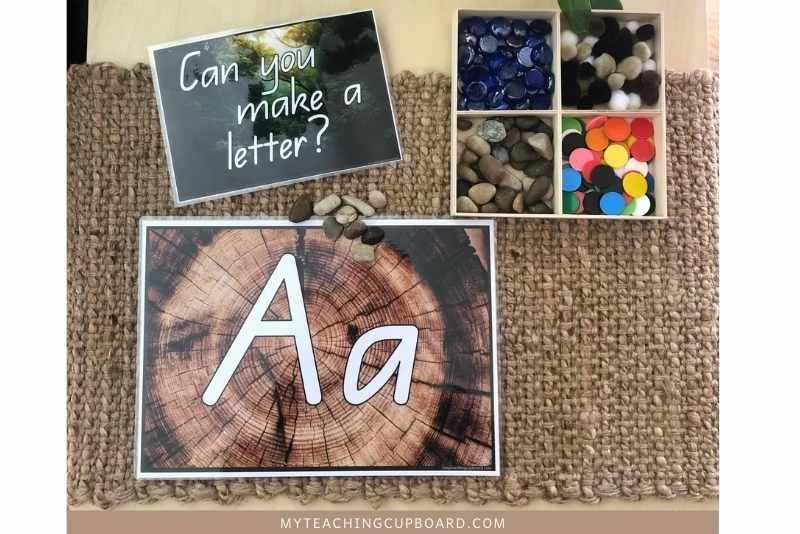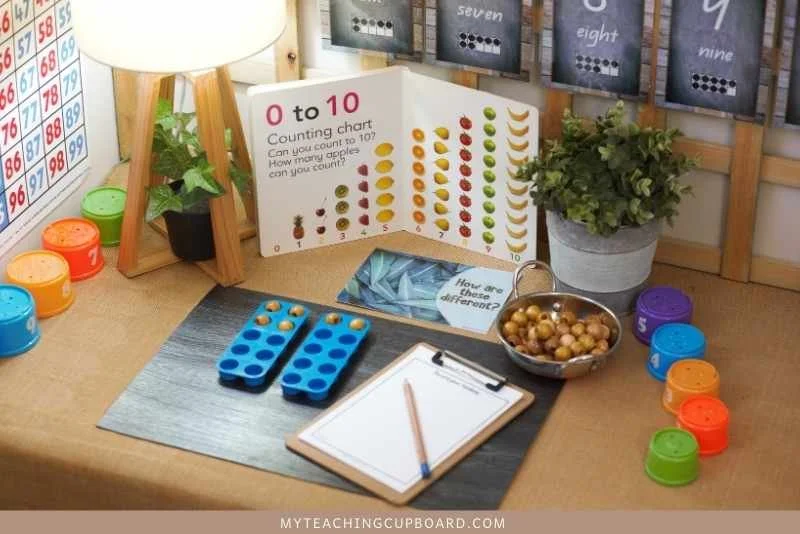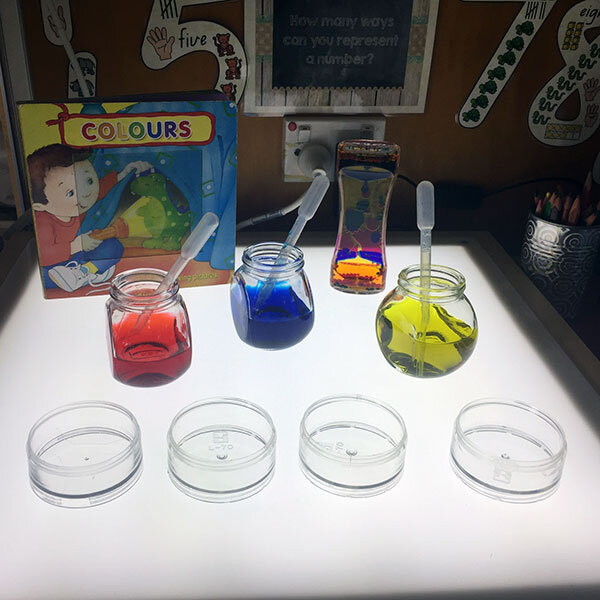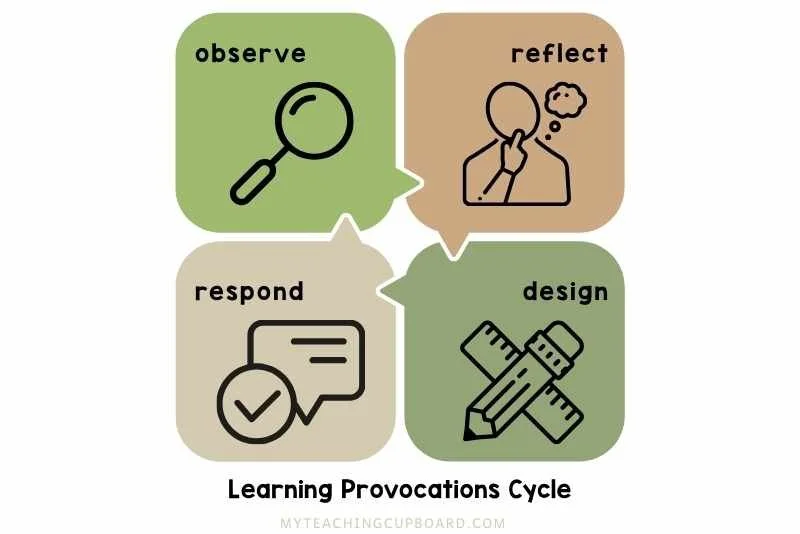What is a Learning Provocation?
Discover what a learning provocation is and how to use it in your play-based classroom. Learn the difference between a learning invitation and a learning provocation, with real examples, tips, and strategies to spark curiosity and support curriculum goals.
The Heart of Inquiry-Based Learning
Setting up a play-based classroom can be exciting… but also a bit overwhelming. There’s something magical about filling your space with open-ended materials, natural elements, and inviting provocations.
But then the questions creep in.
Am I doing it right?
How do I make provocations purposeful?
What if the children don’t engage at all?
I’ve been there. In those early days of setting up my investigation areas, I’d spend hours carefully choosing resources and arranging beautiful spaces, only to find the children walked right past them or used them in ways I didn’t plan for or expect.
Sometimes it worked brilliantly.
Other times it fell flat.
But every single time, it taught me something.
This blog post is here to help you skip that trial-and-error phase.
I’ll walk you through what a learning provocation really is, how it differs from a learning invitation, and most importantly, how you can use provocations to boost children’s engagement, spark curiosity, engage young learners, and meet your curriculum goals in a way that still feels true to play-based, child-led learning.
Whether you’re new to the concept of provocations or simply looking to make yours more intentional and effective, this guide will give you the insight, clarity, and confidence to move forward.
And you might just walk away with a few fresh ideas for your next set-up.
What is a Learning Provocation?
Learning provocations are used in the classroom to "provoke" thought and motivate thinking or investigation.
There is some debate regarding the difference between a learning invitation and a learning provocation. Many people use these terms interchangeably. A little research found that a learning invitation invites the child to explore, construct and represent their learning in an open-ended setting. A learning provocation however is a little more constructed, usually with visual or written prompts to provoke possible actions and guide the outcomes.
A learning provocation is designed to provoke learning. It is intentionally designed by the teacher. Learning provocations can be based on curriculum learning intentions, children’s interests or designed to cover assessment criteria.
A learning invitation is also designed with intention, but it is less transparent. In a learning invitation, the children are invited to explore the resources how they wish and at their developmental level of understanding. In my experience, what I have intended to happen in a learning invitation is sometimes not what the children envisage in the same space. Interestingly, I have noticed that their ideas are often better than mine!
At its core, a learning provocation is an intentionally created setup that sparks curiosity, encourages exploration, and deepens understanding. It invites the child into the learning process, but also gently nudges them toward specific thinking or inquiry.
Loris Malaguzzi, founder of the Reggio Emilia approach, reminds us that “Nothing without joy.” A well-designed provocation is joyful - it invites wonder, discovery, and creativity.
When you want to give a gift to someone, you happily search for something you think she will love. You carefully select the gift and present it in a beautiful way, with colourful wrappings, ribbons, and fond words. You eagerly anticipate the surprise and delight your gift will inspire, and you trust she will love it because it came from knowing her so well.
In teaching, the gift of materials comes from your relationship with the children. The materials represent a bit of you and who you are, as well as the tender way in which you know the children. The children accept these gifts with appreciation, bringing their own ideas and passions to them, which in turn is a gift to you from them. Deb Curtis and Margie Carter (2008)
The teacher must have a comprehensive understanding of the curriculum and the children to effectively design these learning invitations and provocations. The design concepts and principles employed are strongly influenced by the teacher’s values and understandings.
The provocations and invitations a teacher designs and offers reflect the individual teacher’s values and beliefs so the learning invitations and provocations in your classroom will provide an insight into what you as an educator believe children deserve and are capable of.
In both learning invitations and provocations, the utilised space should be engaging to the child. It should stimulate the senses and encourage children to explore and wonder. Both learning invitations and learning provocations should engage and excite the learner. These beautiful spaces intentionally designed by the educator need to promote investigation, discovery and provide the child an opportunity to demonstrate their conceptual understandings.
When provocations are planned with intention, they don’t just look beautiful - they become a powerful tool for learning. They allow you, as the teacher, to gently guide your children's learning while still honouring their voice and choice.
Provocations can be designed to align directly with the ACARA content descriptors. Whether you're targeting language development, numeracy concepts, or science inquiry, provocations provide a flexible, child-led way to meet learning outcomes while keeping young children deeply engaged.
As Kathy Walker explains in Play Matters: The aim in the WLA classroom is to promote a sense of wonder, exploration, investigation and interest in a rich range of materials, resources and opportunities in which the child can engage. It is referred to as a ‘child-centred’ classroom and the way the equipment and resources are arranged reflects the child as the most important part of the environment.
This mirrors the heart of Reggio-inspired provocations, where materials are chosen with purpose, the environment acts as the third teacher, and learning grows from the children's current interests.
If you’re curious to see what this looks like in practice, I share many real-life examples in my blog post Reggio Emilia Provocations.
Invitations vs Provocations: A Helpful Comparison
There is some debate regarding the difference between a learning invitation and a learning provocation. Many people use these terms interchangeably. A little research found that
a learning invitation invites the child to explore, construct and represent their learning in an open-ended setting.
a learning provocation, however, is a little more constructed, usually with visual or written prompts to provoke possible actions and guide the outcomes.
A learning provocation is designed to provoke learning. It is intentionally designed by the teacher. Learning provocations can be based on curriculum learning intentions, children’s interests or designed to cover assessment criteria.
A learning invitation is also designed with intention, but it is less transparent. In a learning invitation, the children are invited to explore the resources how they wish and at their developmental level of understanding.
In my experience, what I have intended to happen in a learning invitation is sometimes not what the children envisage in the same space. Interestingly, I have noticed that their ideas are often better than mine!
To help clarify the difference, here’s a simple comparison:
Both learning invitations and provocations are valuable.
They sit side by side in a play-based classroom and often evolve into one another. Sometimes a provocation will emerge from a child’s interaction with an invitation - or vice versa. And that’s the magic.
As early childhood educators, our job is to observe, reflect, and design learning experiences that honour the child’s current interests while supporting their growth. Understanding the subtle difference between invitations and provocations gives you more tools to meet each child where they are at.
Examples of Provocations in Action
There is no one right way to create a learning provocation. Good provocations grow from your understanding of the children, their developmental needs, and their current interests. They often evolve over time and change based on how the children respond.
In my classroom, I design provocations using materials and prompts I’ve created to be open-ended, engaging, and curriculum-aligned.
Here are three examples of learning provocations that have worked beautifully with my class and that you can recreate too.
Loose Parts Alphabet Mat – Exploring Letter Formation
I set up our letter Aa loose parts alphabet mat with a tray of counters, pompoms, glass gems and small stones. I added a student recording sheet and a simple printable question prompt: “Can you make a letter?”
Some students carefully formed the uppercase A using the provided loose parts, and one child spent 15 minutes lining up the counters in simple AB patterns.
This provocation gave children a hands-on way to explore letter shapes and phonics while developing fine motor skills and symbolic play.
Get all my Loose Parts alphabet Mats HERE.
They are specifically designed to blend sensory learning and play-based literacy activities and will encourage both creativity and deep learning. Whether you’re struggling to find a literacy activity that holds your students’ attention or you just need a simple, low-prep activity for small group literacy rotations, these mats give you an easy, versatile solution.
2. Counting with Natural Materials – Maths Provocation
For the Foundation Stage Number and Place Value content descriptor AC9MFN03 – quantify and compare collections to at least 20 using counting and explain or demonstrate reasoning, I used one of the prompts from my Math Provocations for Number and Algebra – Foundation Stage resource.
I set up a table with a variety of materials - a selection of small wooden beads, some tens frames, a counting book and a few counting cups. The setup prompt read: “How are these different?”
Some children used one-to-one correspondence, others grouped in twos and fives. One child proudly put out 4 beads, then 6 more, and exclaimed, “Look! Four and six is ten!”
This provocation supported counting, partitioning, and reasoning - all aligned to ACARA V9 outcomes.
You can get all 115 of my Reggio Math Provocations so you can easily teach ALL the Number and Algebra content descriptions for ACARA Foundation Stage HERE in my Math Provocations for Number and Algebra - Foundation Stage Provocations. These hands-on learning provocations will make your play based math investigation areas so quick and easy to set up and the bonus? They are all aligned to the ACARA curriculum.
3. Rhyming Basket – Literacy Provocation Using Rhyming Prompts
I set up a rhyming provocation using my FREE Rhyming Basket Resources. In a basket, I placed a few familiar rhyming objects: a boat, a toy goat, a little bear and a dollhouse chair and I wrote a rhyming prompt on a card that said, “Which two objects rhyme?”
Some children simply matched objects, while others began creating silly rhyming stories using the items. One child picked up the cat and hat and said, “The cat sat in the hat… then he went splat!”
It was spontaneous language play that built phonological awareness in a way that felt like just plain fun.
You can get my FREE Rhyming Basket Resources HERE in My Free Resources Library. There are 4 levels of difficulty within the phonological skill of rhyming.
Identifying rhyme - does hat rhyme with cat
Matching rhyming words - which one rhymes with hat, pig or cat
Oddity - which one doesn’t rhyme, hat pig cat
Producing rhyme - give me a word that rhymes with hat
My Rhyming Basket Resource has ideas to help you teach all 4 stages of rhyming.
Each of these provocations began with a spark - a starting point - something the children were curious about, a curriculum focus I needed to cover, or an opportunity to extend thinking.
They weren’t fancy or expensive, but they were intentional and that’s the key.
TEACHING TIP: Start with a thoughtful prompt and a simple setup.
Like the ones in my examples, the learning that follows will be rich, creative, and often surprising. That’s the beauty of provocations - they meet the child where they are and give them space to go further.
If you’d like even more ideas for setting up provocations like these, you’ll love my blog post Reggio Emilia Provocations, where I walk through the Reggio Emilia Philosophy and how to use materials and the environment to create magical, meaningful learning moments.
Why Provocations Matter: Research and Theory
At their core, learning provocations are about far more than just pretty set-ups or engaging invitations. They’re grounded in decades of educational theory and supported by current research into how young children learn best.
Loris Malaguzzi, founder of the Reggio Emilia approach, spoke about the “hundred languages of children” - the idea that children express themselves and make sense of the world in endless ways. Learning provocations honour those many languages by offering materials, spaces, and questions that invite children to explore in ways that are meaningful to them.
If you’d like to discover what the 100 languages of children means, where it came from and why it is an important element of any child-centered education program, check out this blog post: What Does the 100 Languages of Children Mean?
In this blog post you’ll find how you can use the hundred languages of children in your classroom to set up purposeful learning invitations and provocations.
Maria Montessori believed that children have an innate desire to learn. She said, “Education is a natural process carried out by the child and is not acquired by listening to words but by experiences in the environment.” Provocations provide those experiences. They create space for discovery, problem-solving, and hands-on exploration.
The Walker Learning Approach also highlights the importance of intentional, personalised, and purposeful environments:
The aim in the WLA classroom is to promote a sense of wonder, exploration, investigation and interest in a rich range of materials… the equipment and resources are arranged [to reflect] the child as the most important part of the environment. (Play Matters, Kathy Walker)
Research supports what many early childhood educators already know: when children are deeply engaged and emotionally connected to their learning, they learn more and they remember more. According to John Hattie’s Visible Learning, learning that includes active inquiry, student choice, and meaningful engagement has a high impact on student achievement.
In play-based classrooms, provocations help bridge the gap between children’s interests and curriculum goals.
They give teachers a way to meet outcomes, like those in the ACARA Foundation Curriculum - while still protecting children’s right to wonder, explore, and construct their own knowledge.
When we design learning provocations with intention, we’re shaping a mindset. We’re telling children: “Your ideas matter. Your thinking is valued. You are a capable and curious learner.”
3 Steps to Setting Up a Learning Provocation
Creating a meaningful provocation doesn’t have to be complicated. With a little intention and structure, you can set up learning experiences that both engage your students and support their developmental and curriculum goals.
In my blog post 3 Steps to Setting Up a Learning Provocation, I walk you through a simple, repeatable process for designing purposeful provocations in any classroom. Here’s a quick summary to get you started:
Step 1 – Thoughtful Selection of Materials
Choose materials that are open-ended, interesting, and relevant to either the children's current interests or your intended learning goals. Think: natural elements, loose parts, familiar objects, or photos and artefacts that connect to something your class has been talking about.
Your choice of materials is at the heart of every good provocation. It sets the tone and direction for inquiry.
Step 2 – Create an Inviting, Accessible Set-Up
Use baskets, trays, labels, or treasure boxes to present the materials in a way that’s organised and inviting. I like to design peaceful spaces with soothing elements and enough room for 2–6 children to interact comfortably.
The space should feel like a gentle invitation to pause, wonder, and engage. Even the size of the area can impact how long children stay and what they explore.
Step 3 – Add a Prompt and Observe the Learning
A simple question, photograph, or challenge card can add just the right nudge to guide children’s thinking.
Then stand back and watch, listen, and document what unfolds.
You’ll often find that what starts as a single provocation leads to an incredible learning journey you couldn’t have predicted.
Want more details, tips, and real-life examples?
Head over to my full blog post: 3 Steps to Setting Up a Learning Provocation for a deeper dive into setups and helpful visuals to support your planning.
Common Mistakes (and How to Avoid Them)
Even with the best intentions, it’s easy to miss the mark when setting up a learning provocation. And I say that from experience!
I've made every mistake on this list at least once!
The good news is, once you know what to look for, you can quickly adjust and create more powerful, purposeful provocations.
❌ Mistake 1 – Doing All the Thinking for the Children
When we over-structure the setup or include a predetermined outcome, we limit the critical thinking we’re trying to encourage.
A provocation is not an activity with one right answer. It’s an open-ended invitation for the child to think, question, and explore.
✅ Instead: Ask yourself: Does this setup encourage multiple possibilities? Will children bring their own ideas to it? If the answer is yes, you’re on the right track.
❌ Mistake 2 – Not Connecting to the Curriculum or intended Learning Intentions
It’s easy to get swept up in creating beautiful play spaces, but without a clear learning focus, some provocations fall flat.
That’s when we end up wondering, “What are they actually learning from this?”
✅ Instead: Start with your curriculum goals or learning intentions, and then design backwards. My provocations always link to something I want to teach or assess.
Need a hand? My ready-made Investigations Resources include prompts, checklists, and documentation tools that make this step easier.
❌ Mistake 3 – Missing the Magic That Comes After the Setup
It’s tempting to walk away once the provocation is set up. But the real learning happens in the moments you observe, question, and reflect with the children.
If we’re not watching closely, we might miss the very insights that tell us what to plan next.
✅ Instead: Be present. Jot down observations. Use a clipboard and sticky notes, or my simple FREE teacher observation checklist. Your observations are gold because they help you plan the next provocation and track student growth.
Avoiding these common pitfalls will help your provocations shine. They’ll feel more meaningful, more connected, and more effective - not just for your students, but for you as a teacher too.
The Teacher’s Role in Learning Provocations
The teacher plays a crucial role in the success of any provocation.
It starts with knowing your learners.
What are they interested in right now?
What’s sparked their questions lately?
What are they ready to explore a little deeper?
Your observations guide the direction of your provocations - whether they’re based on the curriculum, the children’s interests, or a combination of both.
Designing a provocation is an intentional teaching strategy.
It’s about offering the right materials, in the right space, with the right amount of guidance to allow the child’s own ideas to take flight.
But the work doesn’t stop once the provocation is in place. This is where the teacher becomes the listener, the documenter, and the learning partner.
Take notice of what materials are being used, what language is emerging, and what problems children are trying to solve.
You should ask thoughtful, open-ended questions to deepen thinking:
I wonder why that worked?
What might happen if you tried it another way?
What else could you use?
You also need to step back. Allow for uninterrupted play and limited intervention and trust that learning is happening, even if it doesn’t always look how you expected. Sometimes that means staying quiet. Other times, it means knowing just the right moment to reframe a question or offer a gentle prompt.
It’s through this ongoing cycle - observe, reflect, design, respond, that provocations become a powerful learning tool.
And that’s why your role matters so much. You are the intentional teacher, the designer of space, and the guide for young learners as they navigate their own learning process.
If you want to make your role as an early childhood educator a little easier, download my free Play Observation Checklist from the Free Resources Library. It gives you space to note who each child is working with, what investigation area they are at, and prompts you to consider ideas to extend their learning and play - along with possible resources you could add to keep the inquiry going.
Successful Provocations Are Powerful Gifts of Learning in the Early Years
When you design a learning provocation with intention, you’re doing more than setting out materials - you’re giving a gift. Your set ups are a gift of curiosity, of possibility, of incredible learning opportunities that comes from the heart of your relationship with the children.
Throughout this post, we’ve explored:
What a learning provocation is and how it differs from a learning invitation
Why provocations matter and how they align with curriculum goals
Real classroom examples using prompts from my own resources
Common pitfalls to avoid and how to observe children’s thinking more deeply
And we’ve unpacked what it means to be an intentional teacher in a play-based, inquiry-rich classroom where your values, observations, and environment all work together to support each child’s learning process.
Provocations and invitations for learning are essential elements of any investigative, play-based learning environment.
Children have an innate desire to explore, learn and understand the marvels of the world around them and offering interesting materials in a stimulating environment will enhance this innate desire.
I believe invitations and provocations for learning are the educational right of every child and every teacher.
If you’re ready to design provocations that are purposeful, playful, and curriculum-aligned, I’ve created a full collection of resources to help you. From loose parts mats and math prompts to literacy invitations and observation tools - you’ll find everything you need in my Investigations Collection.
Follow me on
Follow me on
And don’t forget to grab your free Play Observation Checklist from my Free Resources Library to make documenting learning easier and more intentional.
Because when provocations are done well, they don’t just provoke learning… they inspire joy.

